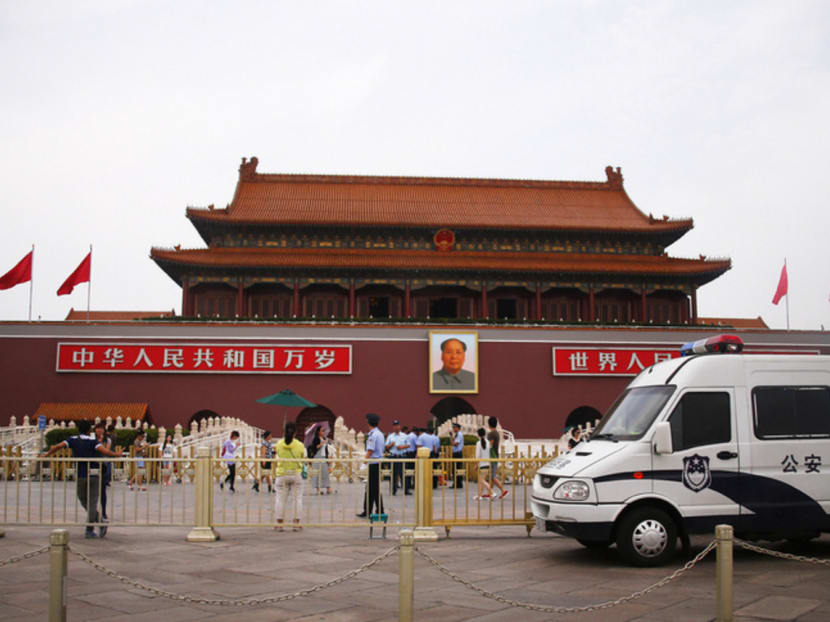China planned to send ‘huge sums’ to Swiss banks as Tiananmen raged
SHANGHAI — Communist Party leaders approached Swiss diplomats about depositing “very significant amounts of money” in the European country’s banks as the 1989 Tiananmen protests shook Beijing, it has been claimed.

During the Tiananmen Square protests in 1989, Communist Party leaders approached Swiss diplomats about depositing ‘very significant amounts of money’ in the European country’s banks, according to messages obtained from Canada’s national archives. Photo: REUTERS
SHANGHAI — Communist Party leaders approached Swiss diplomats about depositing “very significant amounts of money” in the European country’s banks as the 1989 Tiananmen protests shook Beijing, it has been claimed.
The report appears in a trove of confidential diplomatic cables from the Canadian Embassy in Beijing that has been published nearly 26 years after the deadly suppression of protests on June 4, 1989.
The messages were obtained from Canada’s national archives by Mr Tom Korski, a former Beijing correspondent for the South China Morning Post.
One of the most explosive allegations in “thousands” of documents is that, as unrest gripped the Chinese capital in 1989, senior Communist Party leaders explored ways of sending large sums of money to Switzerland.
The claim suggests there were greater fears for the government’s stability at the heart of the Communist Party than previously thought.
“The Swiss Ambassador, himself an ‘Old China Hand’, told us that over the past few months every member of the Politburo Standing Committee has approached him about transferring very significant amounts of money to Swiss bank accounts,” one cable reads, according to Mr Korski’s report. “For obvious reasons, he has urged us to guard this information with the utmost care.”
The despatches paint a bleak and bloody picture of events in Beijing during and after the military offensive against thousands of protesters who had spent weeks occupying Tiananmen Square in the spring of 1989.
“An old woman knelt in front of soldiers pleading for students; soldiers killed her,” reads one excerpt from a description of the regime’s “savage” response, according to Mr Korski.
“A boy was seen trying to escape holding a woman with a two-year-old child in a stroller and was run over by a tank,” says another.
Elsewhere, the cables mention unconfirmed reports of the corpses of garrotted soldiers being found in a canal and rumours of public executions. A message sent from the Canadian Embassy to Ottawa 11 days after troops advanced on Tiananmen Square reportedly reads: “The country is now being controlled by a group of vicious elderly generals and the government is run by people who will blindly follow their orders. The situation looks grim at best.”
Diplomats correctly predicted that China’s leaders would attempt to cover up the bloodshed unleashed on their nation’s capital.
“It may be years before the true story is known,” says one message. “The era of darkness may be long.”
Last year marked the 25th anniversary of the Tiananmen Square massacre, yet victims’ families have yet to receive any explanation as to how their loved ones died. The Tiananmen Papers, a 2001 compilation of leaked internal party documents, claimed that on June 2, 1989, senior leaders met in Beijing and decided to order troops to clear the streets.
“We’ve got to do it or the common people will rebel,” Wang Zhen, the then vice-president, was quoted as saying. “Anybody who tries to overthrow the Communist Party deserves death and no burial.”
Hundreds or even thousands of people, including many young students, are thought to have died, but no official death toll or investigation has been published.
THE DAILY TELEGRAPH





